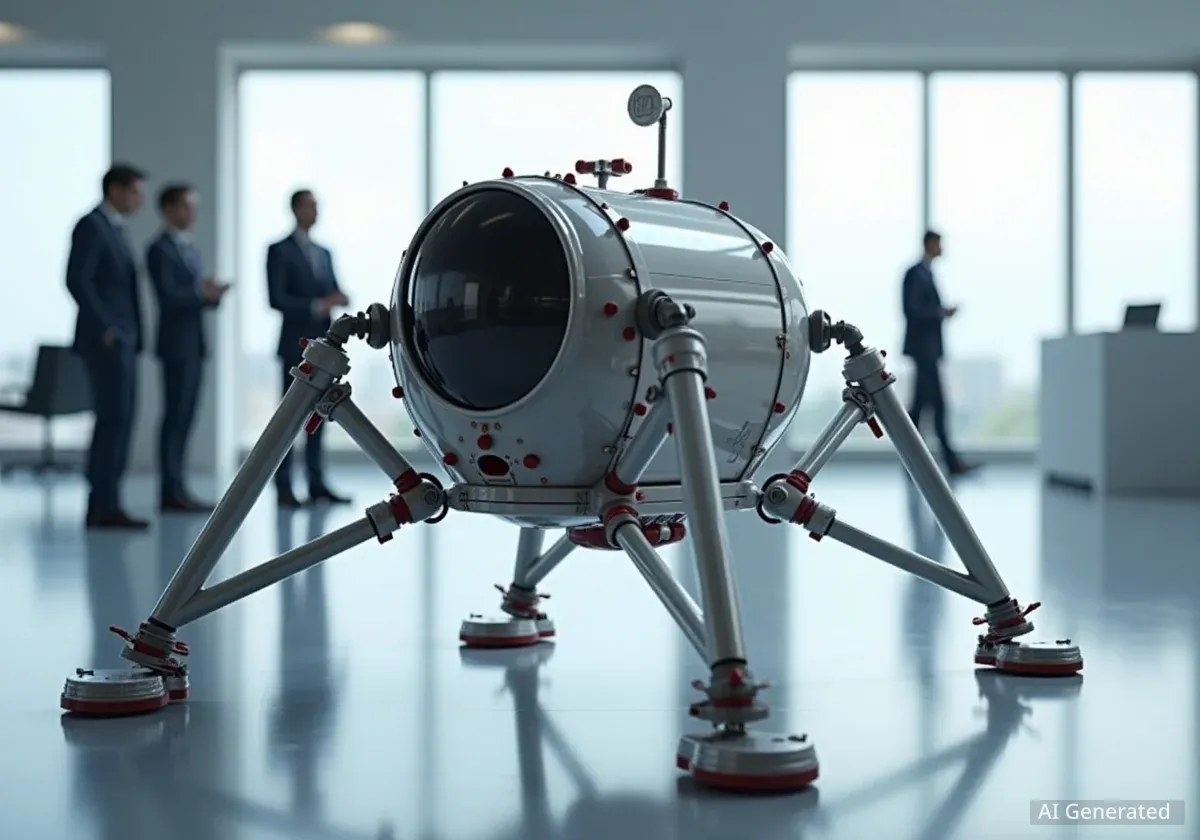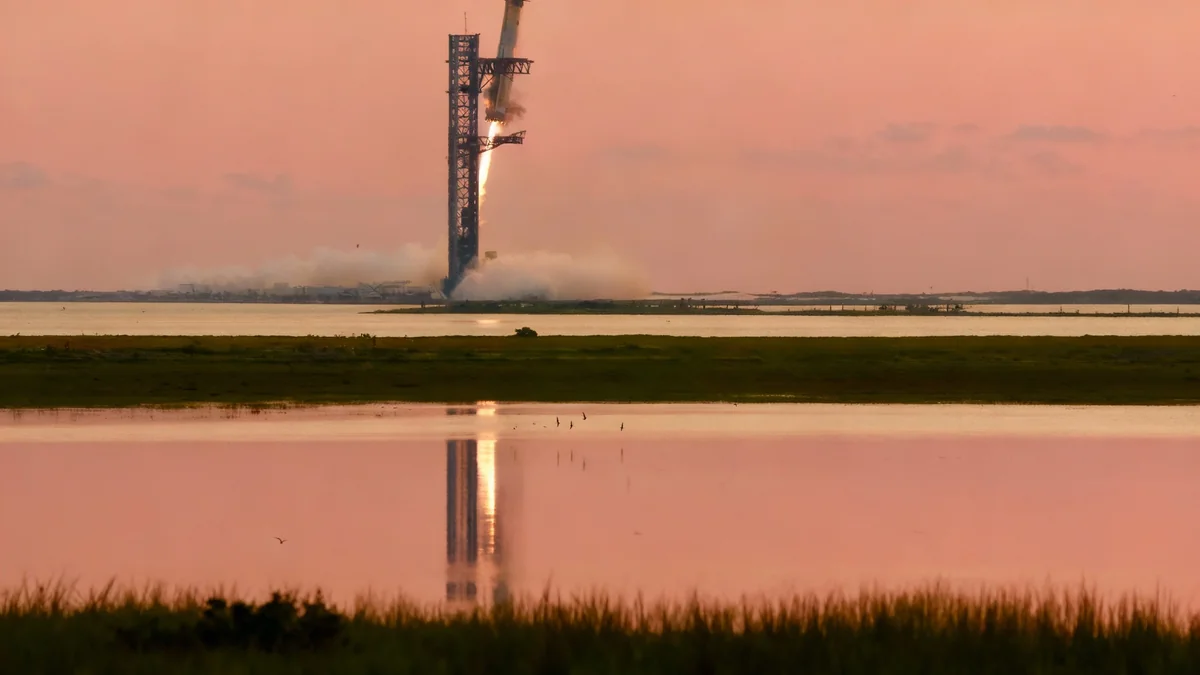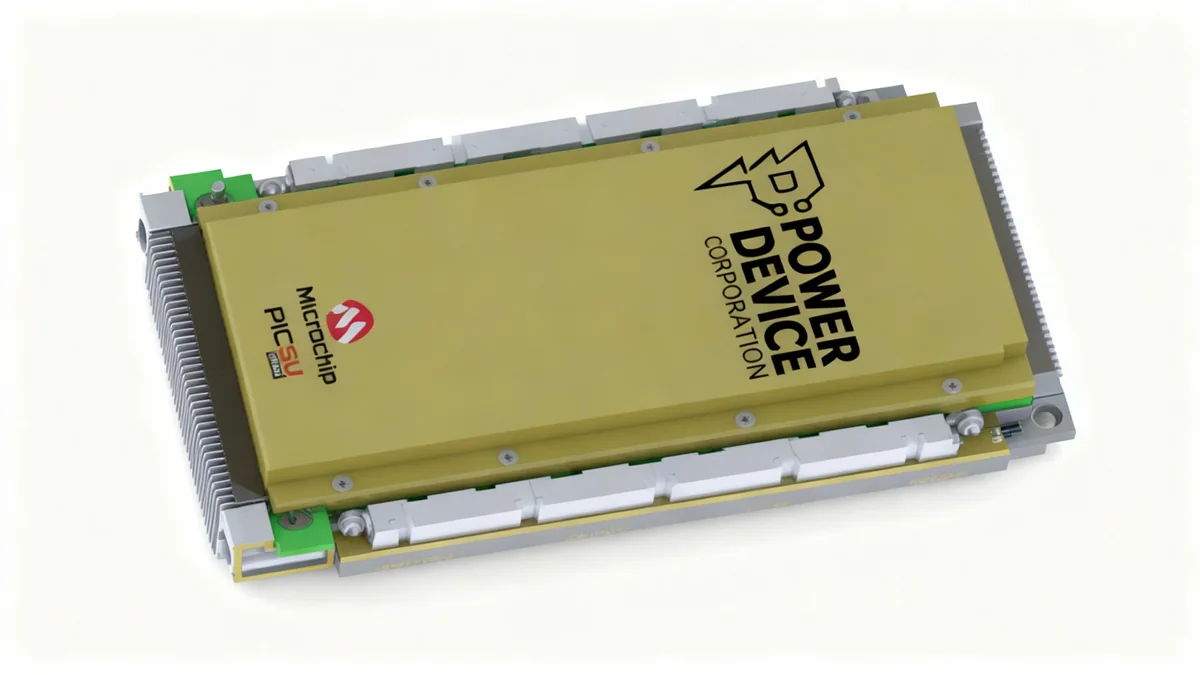In-space transportation company Impulse Space has announced its development of a new lunar cargo delivery system designed to transport up to three metric tons to the moon's surface. The company aims to begin missions in 2028, targeting what it identifies as a significant gap in the market for mid-sized lunar payloads.
Key Takeaways
- Impulse Space is developing a lunar lander capable of delivering 3 metric tons of cargo.
- The first mission is planned for 2028, with a target of two missions per year.
- The system combines the company's Helios orbital vehicle with a newly designed lander.
- It aims to fill the payload gap between small commercial landers and large human-rated systems.
Targeting a Gap in Lunar Delivery Services
Impulse Space is entering the lunar logistics market with a specific payload class in mind. The company's founder and CEO, Tom Mueller, stated that a critical gap currently exists for payloads in the "midsized" range, which he defines as between 0.5 and 13 tons.
This new lander is designed to address that specific need. According to the company, the lander will support the construction of essential lunar infrastructure, such as habitation modules and power generation systems, which are too heavy for smaller landers but may not require the massive capacity of larger vehicles.
"We need landers capable of near-term, multi-ton cargo deliveries in order to rapidly build out a sustainable lunar presence," Tom Mueller explained in a statement.
The Current Lunar Lander Landscape
The emerging market for lunar transportation is currently served by two distinct classes of vehicles. On one end, landers developed under NASA's Commercial Lunar Payload Services (CLPS) program can typically deliver up to half a metric ton (500 kilograms) to the moon.
On the other end of the spectrum are massive landers like SpaceX's Starship and Blue Origin's Blue Moon Mark 2. These systems are being developed for NASA's Human Landing System (HLS) program and are designed to transport astronauts and dozens of tons of cargo.
Lunar Payload Capacities
- Small Landers (CLPS): Up to 0.5 metric tons
- Impulse Space Lander: 3 metric tons
- Large Landers (HLS): 20+ metric tons
Impulse Space's proposed three-ton capacity lander is positioned directly between these two categories, offering a new option for customers who need to send more substantial equipment to the lunar surface without booking a much larger, more expensive vehicle.
A Two-Stage Approach to Lunar Delivery
The company's plan involves a two-part system that leverages its existing and in-development technology. The lander will be transported from low Earth orbit (LEO) to a low lunar orbit by Impulse's Helios transfer vehicle.
This orbital transfer is expected to take approximately one week. Once in position around the moon, the lander will detach from the Helios vehicle and perform its final descent to the lunar surface. This modular approach allows the system to be launched on a variety of existing commercial rockets.
The Helios Transfer Vehicle
The Helios is a high-energy orbital transfer vehicle designed by Impulse Space for missions beyond Earth orbit. The first flight of Helios is scheduled for late 2026. The company anticipates flying multiple Helios missions per year by the time the lunar lander is ready in 2028.
Leveraging Proven Technology
Impulse Space plans to incorporate components and subsystems already developed for its other spacecraft into the new lunar lander. This strategy aims to reduce development time and risk by relying on flight-proven hardware.
The lander's propulsion system will use an engine based on the same technology as the Saiph thrusters on its Mira spacecraft. Both systems operate on storable propellants—nitrous oxide and ethane—which are easier to handle for long-duration missions compared to cryogenic fuels like liquid hydrogen and oxygen.
Market Competition and Future Plans
While Impulse Space has identified a market niche, it is not without competition. Blue Origin's Blue Moon Mark 1 lander is also designed to carry up to three metric tons to the lunar surface. Its first mission could launch as early as the end of this year aboard the company's New Glenn rocket.
NASA has already selected the Blue Moon Mark 1 for a high-profile mission. In 2027, it is scheduled to deliver the agency's VIPER rover, a robotic vehicle designed to search for water ice at the moon's south pole.
Impulse Space has not disclosed the development cost for its lander or the price it will charge customers. However, the company stated it intends to offer a "cost-effective price point" and aims to conduct two lunar delivery missions per year once operational.
A Broader Vision for In-Space Mobility
This lunar lander project is part of a larger strategy for Impulse Space to expand its services beyond Earth orbit. The company's initial focus has been on providing mobility in near-Earth space, but this announcement signals a clear ambition to operate throughout the solar system.
This is not the company's first proposal for an interplanetary lander. In 2022, Impulse Space announced a partnership with Relativity Space to develop a Mars lander. That mission, intended to launch on Relativity's Terran R rocket, was initially targeted for 2024. However, with Terran R yet to make its first flight, there have been no recent updates on the project's status.
"I’ve spent much of my career working to solve access to space; now, Impulse is solving mobility in space," said Mueller. "Our work to improve in-space mobility doesn’t end at geostationary orbit."
With its new lunar lander, Impulse Space is taking a significant step toward becoming a key player in the logistics infrastructure required for a permanent human presence on the moon and beyond.





